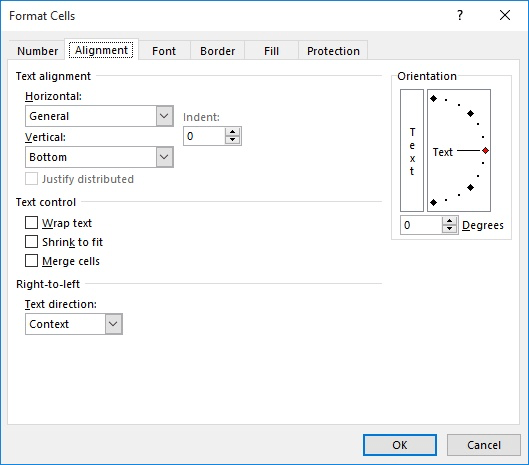Please Note: This article is written for users of the following Microsoft Excel versions: 2007, 2010, 2013, 2016, 2019, 2021, and Excel in Microsoft 365. If you are using an earlier version (Excel 2003 or earlier), this tip may not work for you. For a version of this tip written specifically for earlier versions of Excel, click here: Understanding Cell Indenting.
Written by Allen Wyatt (last updated November 9, 2024)
This tip applies to Excel 2007, 2010, 2013, 2016, 2019, 2021, and Excel in Microsoft 365
When you think of indenting information, you normally think of a word processor. It is not unusual to indent paragraphs or specific lines of information on the screen. Excel, while definitely not a word processor, allows you to easily indent information within a cell.
To set the indent to be used in a cell, display the Home tab of the ribbon. Note that there are two indent tools in the Alignment group. Clicking these two tools will move the indent of the cell either to the right or back toward the left.
If you want even greater control over cell indenting, follow these steps:

Figure 1. The Alignment tab of the Format Cells dialog box.
You should also know that Excel allows you to indent from either the left or right of the cell. If you use the Horizontal drop-down list (in the Format Cells dialog box), you can choose Left (Indent) or Right (Indent) alignment. The number you specify in the Indent control (step 4) applies to either left or right indenting, depending on your choice in the Horizontal drop-down list.
If you have set up a cell so that text wraps within the cell, then indentation affects all the lines of text within the cell—not just the first line.
ExcelTips is your source for cost-effective Microsoft Excel training. This tip (9425) applies to Microsoft Excel 2007, 2010, 2013, 2016, 2019, 2021, and Excel in Microsoft 365. You can find a version of this tip for the older menu interface of Excel here: Understanding Cell Indenting.

Professional Development Guidance! Four world-class developers offer start-to-finish guidance for building powerful, robust, and secure applications with Excel. The authors show how to consistently make the right design decisions and make the most of Excel's powerful features. Check out Professional Excel Development today!
Excel often changes the formatting of a cell based on how it parses what you are entering into that cell. This is ...
Discover MoreThe ability to center text across a range of cells has long been a staple of experienced Excel users. Here's how to ...
Discover MoreNeed to get rid of the borders around a cell? The shortcut in this tip can make quick work of this formatting task.
Discover MoreFREE SERVICE: Get tips like this every week in ExcelTips, a free productivity newsletter. Enter your address and click "Subscribe."
There are currently no comments for this tip. (Be the first to leave your comment—just use the simple form above!)
Got a version of Excel that uses the ribbon interface (Excel 2007 or later)? This site is for you! If you use an earlier version of Excel, visit our ExcelTips site focusing on the menu interface.
FREE SERVICE: Get tips like this every week in ExcelTips, a free productivity newsletter. Enter your address and click "Subscribe."
Copyright © 2026 Sharon Parq Associates, Inc.
Comments